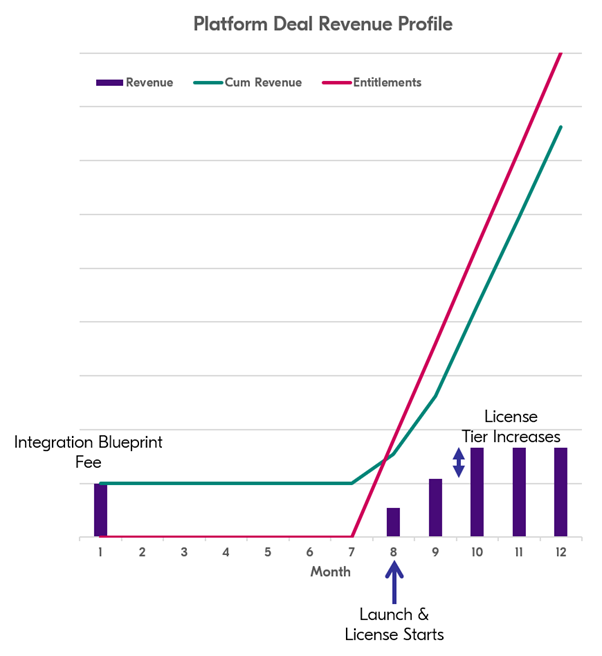Platform licensing is a relatively new business line for Bango – we signed our first deal (with BT) in 2020. This business is a different proposition to our transactional payments offering and, as such, comes with a different revenue model.
Who is the target customer?
Any business looking to offer their customers multiple, third-party subscription services, which could include music, movies, TV, sports, gaming and lifestyle services. Currently, the Bango target customer for platform licensing is primarily a telco, but there are opportunities to move into other sectors where businesses can reach millions of consumers, for example energy, retail and financial services.
What is the appeal of a platform license to these customers?
- Using the Bango platform is quicker and more cost effective than developing a proprietary, in-house solution;
- Bango already has the merchants with the most desirable subscription services connected to our platform;
- Managing multiple customer entitlements across many services, handling introductory discount periods, renewals etc is complex. It is easier to outsource;
- Bango uniquely has market-wide consumer insights that help our customers increase revenue, conversion and retention.
How does the revenue model work?
The revenue model is depicted in the diagram above. There are three key steps:
1) The Integration “Blueprint” fee. The customer (e.g. a telco) pays Bango a one-off fee to benefit from the Bango design for how the platform will work.
2) After deploying the platform, Bango & the Telco agree a launch date. This is often some months after the agreement is signed, while the telco schedules its marketing activity and refines its customer proposition. Once services go live through the platform, the license fee begins. In the example pictured above, the license fee is shown as starting mid-way through month 8 after the deal has been signed.
3) The license fee is proportional to usage. Once the number of entitlements reaches an agreed level, the license fee will jump up to the next tier agreed (shown in month 10 in the example).
Additional points to note:
Entitlements are allocated per subscription, not per customer. If a user charges Netflix, Amazon Prime and Norton Security to their telco bill, that counts as three entitlements.
The addition of this revenue model to the Bango revenue mix, at least in part, accounts for the changing relationship between end user spend (EUS) and revenue. This is because under a platform licensing deal we charge per entitlement, but the entitlement fee is the same for a $5.99 subscription as it is for a $10.99 subscription meaning you could see a larger EUS:Revenue ratio, until the next license tier threshold is reached, and the relationship normalizes.
In most cases, we already have a commercial relationship with the merchant so the fees we generate from the telco are often incremental revenue.
Platform license deals are a great endorsement of Bango technology by the world’s leading telcos and their merchant partners. They are comparatively long-term contracts, bring strong recurring revenue to Bango and is close to a 100% margin business.


